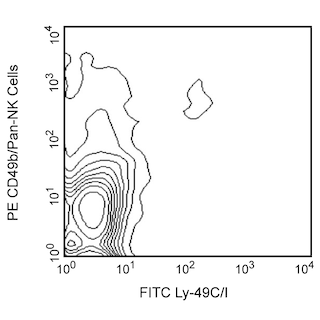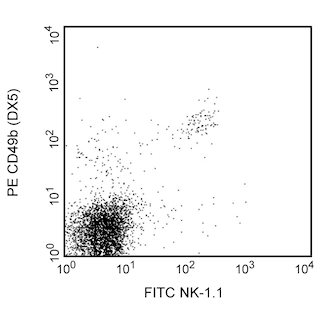-
抗体試薬
- フローサイトメトリー用試薬
-
ウェスタンブロッティング抗体試薬
- イムノアッセイ試薬
-
シングルセル試薬
- BD® AbSeq Assay | シングルセル試薬
- BD Rhapsody™ Accessory Kits | シングルセル試薬
- BD® Single-Cell Multiplexing Kit | シングルセル試薬
- BD Rhapsody™ Targeted mRNA Kits | シングルセル試薬
- BD Rhapsody™ Whole Transcriptome Analysis (WTA) Amplification Kit | シングルセル試薬
- BD Rhapsody™ TCR/BCR Profiling Assays (VDJ Assays) | シングルセル試薬
- BD® OMICS-Guard Sample Preservation Buffer
-
細胞機能評価のための試薬
-
顕微鏡・イメージング用試薬
-
細胞調製・分離試薬
-
- BD® AbSeq Assay | シングルセル試薬
- BD Rhapsody™ Accessory Kits | シングルセル試薬
- BD® Single-Cell Multiplexing Kit | シングルセル試薬
- BD Rhapsody™ Targeted mRNA Kits | シングルセル試薬
- BD Rhapsody™ Whole Transcriptome Analysis (WTA) Amplification Kit | シングルセル試薬
- BD Rhapsody™ TCR/BCR Profiling Assays (VDJ Assays) | シングルセル試薬
- BD® OMICS-Guard Sample Preservation Buffer
- Japan (Japanese)
-
Change country/language
Old Browser
Looks like you're visiting us from {countryName}.
Would you like to stay on the current country site or be switched to your country?


.png)

Two-color analysis of the expression of Ly-49C/I on splenic NK cells. C57BL/6 splenocytes were simultaneously stained with PE Rat Anti-Mouse CD49b (Cat. No. 553858) and FITC Mouse Anti-Mouse Ly-49C and Ly-49I (Cat. No. 553276/562055; right panel). Two-color contour plots were derived from gated events with the forward and side light-scatter characteristics of viable splenocytes. Flow cytometry was performed on a BD FACScan™ flow cytometry system.
.png)

BD Pharmingen™ FITC Mouse Anti-Mouse Ly-49C and Ly-49I
.png)
Regulatory Statusの凡例
Any use of products other than the permitted use without the express written authorization of Becton, Dickinson and Company is strictly prohibited.
Preparation and Storage
Product Notices
- Since applications vary, each investigator should titrate the reagent to obtain optimal results.
- An isotype control should be used at the same concentration as the antibody of interest.
- Caution: Sodium azide yields highly toxic hydrazoic acid under acidic conditions. Dilute azide compounds in running water before discarding to avoid accumulation of potentially explosive deposits in plumbing.
- For fluorochrome spectra and suitable instrument settings, please refer to our Multicolor Flow Cytometry web page at www.bdbiosciences.com/colors.
- Please refer to www.bdbiosciences.com/us/s/resources for technical protocols.
関連製品


.png?imwidth=320)


The 5E6 (also known as clone SW5E6) antibody reacts with Ly-49C[BALB], Ly-49C[B6], Ly-49C[NZB], and Ly-49I[B6], inhibitory receptors which are expressed on subsets of natural killer (NK) cells and NK-1.1+ (or DX5+) T lymphocytes (NK-T cells) in all strains tested except C57BR and RIII, on a population of memory CD8+ T lymphocytes and NK1.1+ γδ T cells in C57BL/6 mice, and on a distinct subset of B-1 cells of BALB/c and C57BL/6 mice. The proportion of NK T cells expressing Ly-49C/I is higher (2-5 fold) in thymus than in liver (immature and mature NK T cells, respectively), and there is evidence that the down-regulation of Ly-49 receptor expression is necessary for normal NK T-cell development. Most NK cells express a single allele of Ly-49C, although occasionally they may express more than one allele. The Ly-49 family of NK-cell receptors are disulfide-linked type-II transmembrane protein homodimers with extracellular carbohydrate-recognition domains (CRD) that bind to MHC class I alloantigens. The Ly-49 family members are expressed independently, such that an individual NK or T cell may display more than one class of Ly-49 receptor homodimers. The 5E6 antibody is specific for the Ly-49C CRD. The Ly-49C[BALB] and Ly-49C[B6] alloantigens bind to MHC class I antigens of the b, d, k, and s haplotypes, and the 5E6 antibody blocks this binding. Binding of Ly-49C[BALB]- and Ly-49C[B6]- expressing transfectants to lymphoblasts of H-2[f], H-2[q], H-2[r], and H-2[v] strains has also been detected. Ly-49I[B6] transfectants bind H-2[r] lymphoblasts and bind much more weakly to the b, d, k, q, s, and v haplotypes. The levels of the Ly-49 inhibitory receptors are down-regulated by their ligands in vivo, and the various levels of expression of an Ly-49 inhibitory receptor may affect the specificity of NK cells. Ly-49C is specifically downregulated in the presence of H-2K[b] class I molecules (one of the Ly-49C ligands). Ly-49C[+] and/or Ly-49I[+] cells mediate allogeneic and hybrid resistance to H-2d bone marrow transplantation. In vitro and in vivo studies suggest that the Ly-49C and/or Ly-49I receptors mediate negative regulation of NK-cell cytolytic activity via tyrosine phosphorylation of their ITIMs (Immunoreceptor Tyrosine-based Inhibitory Motifs).
The epitope recognized by this antibody on Ly49C may be masked on freshly isolated primary NK cells due to cis interactions with MHC class I molecules. This observation has been reported for other Ly49C monoclonal antibodies that bind to the same structural region.

Development References (24)
-
Brennan J, Lemieux S, Freeman JD, Mager DL, Takei F. Heterogeneity among Ly-49C natural killer (NK) cells: characterization of highly related receptors with differing functions and expression patterns. J Exp Med. 1996; 184(6):2085-2090. (Biology). View Reference
-
Brennan J, Mahon G, Mager DL, Jefferies WA, Takei F. Recognition of class I major histocompatibility complex molecules by Ly-49: specificities and domain interactions. J Exp Med. 1996; 183(4):1553-1559. (Biology). View Reference
-
Coles MC, McMahon CW, Takizawa H, Raulet DH. Memory CD8 T lymphocytes express inhibitory MHC-specific Ly49 receptors. Eur J Immunol. 2000; 30(1):236-244. (Biology). View Reference
-
Hanke T, Takizawa H, McMahon CW, et al. Direct assessment of MHC class I binding by seven Ly49 inhibitory NK cell receptors. Immunity. 1999; 11(1):67-77. (Biology). View Reference
-
Hara T, Nishimura H, Hasegawa Y, Yoshikai Y. Thymus-dependent modulation of Ly49 inhibitory receptor expression on NK1.1+gamma/delta T cells. Immunology. 2001; 102(1):24-30. (Biology). View Reference
-
Held W, Kunz B. An allele-specific, stochastic gene expression process controls the expression of multiple Ly49 family genes and generates a diverse, MHC-specific NK cell receptor repertoire. Eur J Immunol. 1998; 28(8):2407-2416. (Biology). View Reference
-
Hoglund P, Sundback J, Olsson-Alheim MY, et al. Host MHC class I gene control of NK-cell specificity in the mouse. Immunol Rev. 1997; 155:11-28. (Biology). View Reference
-
Liu J, Yu YY, Lindahl KF, Kumar V, Bennett M. Allorecognition by murine natural killer cells: studies with bone marrow transplants and lysis of T lymphoblasts. Chem Immunol. 1996; 64:164-180. (Biology). View Reference
-
Mason LH, Gosselin P, Anderson SK, Fogler WE, Ortaldo JR, McVicar DW. Differential tyrosine phosphorylation of inhibitory versus activating Ly-49 receptor proteins and their recruitment of SHP-1 phosphatase. J Immunol. 1997; 159(9):4187-4196. (Biology). View Reference
-
Ochi H, Watanabe T. Negative regulation of B cell receptor-mediated signaling in B-1 cells through CD5 and Ly49 co-receptors via Lyn kinase activity. Int Immunol. 2000; 12(10):1417-1423. (Biology). View Reference
-
Olsson-Alheim MY, Salcedo M, Ljunggren HG, Karre K, Sentman CL. NK cell receptor calibration: effects of MHC class I induction on killing by Ly49Ahigh and Ly49Alow NK cells. J Immunol. 1997; 159(7):3189-3194. (Biology). View Reference
-
Ortaldo JR, Winkler-Pickett R, Mason AT, Mason LH. The Ly-49 family: regulation of cytotoxicity and cytokine production in murine CD3+ cells. J Immunol. 1998; 160(1):1158-1165. (Biology). View Reference
-
Raulet DH, Held W, Correa I, Dorfman JR, Wu MF, Corral L. Specificity, tolerance and developmental regulation of natural killer cells defined by expression of class I-specific Ly49 receptors. Immunol Rev. 1997; 155:41-52. (Biology). View Reference
-
Raziuddin A, Longo DL, Mason L, Ortaldo JR, Bennett M, Murphy WJ. Differential effects of the rejection of bone marrow allografts by the depletion of activating versus inhibiting Ly-49 natural killer cell subsets. J Immunol. 1998; 160(1):87-94. (Biology). View Reference
-
Raziuddin A, Longo DL, Mason L, Ortaldo JR, Murphy WJ. Ly-49 G2+ NK cells are responsible for mediating the rejection of H-2b bone marrow allografts in mice. Int Immunol. 1996; 8(12):1833-1839. (Biology). View Reference
-
Robson MacDonald H, Lees RK, Held W. Developmentally regulated extinction of Ly-49 receptor expression permits maturation and selection of NK1.1+ T cells. J Exp Med. 1998; 187(12):2109-2114. (Biology). View Reference
-
Salcedo M, Andersson M, Lemieux S, Van Kaer L, Chambers BJ, Ljunggren HG. Fine tuning of natural killer cell specificity and maintenance of self tolerance in MHC class I-deficient mice. Eur J Immunol. 1998; 28(4):1315-1321. (Biology). View Reference
-
Scarpellino L, Oeschger F, Guillaume P, et al. Interactions of Ly49 family receptors with MHC class I ligands in trans and cis.. J Immunol. 2007; 178(3):1277-1284. (Biology). View Reference
-
Sentman CL, Hackett J, Kumar V, Bennett M. Identification of a subset of murine natural killer cells that mediates rejection of Hh-1d but not Hh-1b bone marrow grafts. J Exp Med. 1989; 170(1):191-202. (Immunogen). View Reference
-
Skold M, Cardell S. Differential regulation of Ly49 expression on CD4+ and CD4-CD8- (double negative) NK1.1+ T cells. Eur J Immunol. 2000; 30(9):2488-2496. (Biology). View Reference
-
Stoneman ER, Bennett M, An J, et al. Cloning and characterization of 5E6(Ly-49C), a receptor molecule expressed on a subset of murine natural killer cells. J Exp Med. 1995; 182(2):305-313. (Biology). View Reference
-
Takei F, Brennan J, Mager DL. The Ly-49 family: genes, proteins and recognition of class I MHC. Immunol Rev. 1997; 155:67-77. (Biology). View Reference
-
Yu YY, George T, Dorfman JR, Roland J, Kumar V, Bennett M. The role of Ly49A and 5E6(Ly49C) molecules in hybrid resistance mediated by murine natural killer cells against normal T cell blasts. Immunity. 1996; 4(1):67-76. (Biology). View Reference
-
Yu YY, Kumar V, Bennett M. Murine natural killer cells and marrow graft rejection. Annu Rev Immunol. 1992; 10:189-213. (Biology). View Reference
Please refer to Support Documents for Quality Certificates
Global - Refer to manufacturer's instructions for use and related User Manuals and Technical data sheets before using this products as described
Comparisons, where applicable, are made against older BD Technology, manual methods or are general performance claims. Comparisons are not made against non-BD technologies, unless otherwise noted.
For Research Use Only. Not for use in diagnostic or therapeutic procedures.
Report a Site Issue
This form is intended to help us improve our website experience. For other support, please visit our Contact Us page.